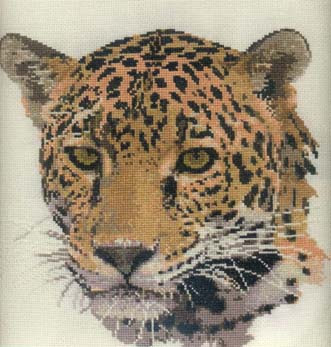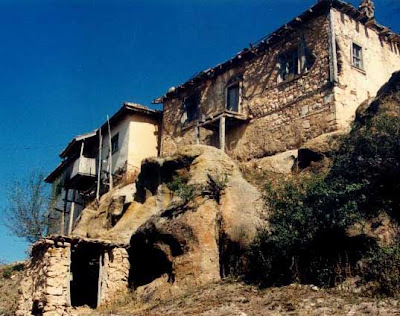If I had to pick a favorite genre of books, it would have to be books with a religious theme in them. Although I am not a religious person, I have had lots of religion in my background, starting from the very first time I set foot in a church as a wee tyke to be “consecrated” (the denomination did not baptize babies). Once I was old enough to walk, Mother always sent my sister and me to the nearest church for our Sunday Schooling.
The first church I picked for myself as an adult was Quaker. I experienced organized evangelical Christianity for a few years and then during a fruitful three years attending The Salvation Army church, a divorce knocked me into the Charismatic milieu in the 1970s. From that point on, I was in and out of various Assemblies of God churches and finally out of organized religion entirely. All of these, as well as an acquaintance with the Mormon religion from my years doing genealogy and a marriage into a Jewish family have been a part of my life and my understanding, some times from an experiential level and sometimes from an intellectual position.
So when I read a book with any kind of a religious theme to it, I am most always at home with it and feel connected in one way or the other. Now I do need to say that I have not rubbed elbows (or eyeballs, more specifically) with middle eastern or far eastern religions, nor the more esoteric groups into which I would put spiritualism, yoga, etc.
In the ‘70s I began reading Peter DeVries books. Among them were
Tunnel of Love, Let Me Count the Ways, Blood of the Lamb, and many other that can be found listed on Amazon or Barnes and Noble websites. DeVries’ books all have a religious thread running through them, and they are so funny that you nearly die laughing, sometimes over religious things, other times just at his funny plots. In one of them, I can’t remember which, the protagonist is awakened in the night by horrible explosions and lots of lights flashing outside his window. As a lapsed churchgoer, he feels that surely this must be the end of the world. He throws himself out of bed, runs into the kitchen, turns the faucet on, and in an attempt to get right with God before meeting his maker he sticks his head under the faucet and says, “I baptize myself in the name of the Father, the Son and the Holy Spirit.” When he finishes, he looks out the window and sees that the firework factory across the river has exploded in flame. It is worth reading every one of his books just to be able to read DeVries own words of that episode!
In the late ‘80s I found Susan Howatch. Now I had always thought of her as writing Gothic novels (which I don’t read) but she did a wonderful batch of books with a religious theme -
Glittering Images, Glamorous Powers, Absolute Truths and
The Wonder Worker. The books are big and thick, set in a modern time period in England. It took a while to get through each of them but they were very satisfying and left me with hunger for more, more!
Some of the more recent books I’ve read have been
Kaaterskill Falls by Allegra Goodman, which dealt with an orthodox Jewish family,
Thread of Gold authored by Mary Doria Russell, which is non-fiction about the Italian partisans saving Jews in their country during World War II, and
The Book Thief, a touching novel by Markus Zusak about both children and Jews trying to survive the Nazi’s machinations during that same war.
Three years ago a book entitled
Gilead was published and just recently a second book,
Home, both written by Marilynne Robinson and dealing with the families of two ministers of different denominations. These two books are dynamite, which is a strange word to use for books so soft and gentle and full of love.
One of my favorite religious figures of all time was Amiee Semple McPherson, founder of the Foursquare Gospel Church. I recently read the book
Sister Aimee: The Life of Aimee Semple McPherson by Daniel Mark Epstein and found it exceptionally fascinating and very relevant to Southern California, as this is where she “did her thing.”
And lastly, I’ve read a couple of books about the Mormon Church that are worth noting. The non-fiction
Under the Banner of Heaven, written by the well-known author Jon Krakauer (
Into Thin Air) and about the fundamentalist Mormons is a must-read. And a very recently published book,
The 19th Wife, is a novel that intertwines two stories, one being of the only wife of Brigham Young to divorce him and the other being of some young fundamentalist Mormon boys who are tossed out of the enclave where their families live for not toeing the fundamentalist line. In reading this book, you have to keep reminding yourself on every page that the author, David Ebershoff, is not writing biographies but a work of fiction. It has to have taken tremendous skill to keep that position.
None of these books aim to convert a person. They are not full of dogma and dogmatic positions. But they all are full of lives lived with some kind of spiritual dimension to them – and best of all, they are all good writing and good “reads.”
 It was Halloween of 2003. Little Tini (Justine Ava, to you who don't know the family) was participating in her first Trick or Treating. It was a cold night and putting her in her warm jammies sufficed for a costume -- with angel wings attached, of course, to make it look like something different from an everynight appearance. She and her older sister, Olivia, were prepared to hit the neighborhood with Mom and Dad.
It was Halloween of 2003. Little Tini (Justine Ava, to you who don't know the family) was participating in her first Trick or Treating. It was a cold night and putting her in her warm jammies sufficed for a costume -- with angel wings attached, of course, to make it look like something different from an everynight appearance. She and her older sister, Olivia, were prepared to hit the neighborhood with Mom and Dad. Of course she didn't know what to expect, but the learning curve comes very quickly when it comes to candy.
Of course she didn't know what to expect, but the learning curve comes very quickly when it comes to candy. 













 Next, this engagement announcement goes way back into the 1970s. Can you imagine opening the newspaper to find this? After telling all your family and friends to watch for it? I watched for a correction or a retraction; perhaps Trudy wanted to stay real low key about this most embarassing mistake.
Next, this engagement announcement goes way back into the 1970s. Can you imagine opening the newspaper to find this? After telling all your family and friends to watch for it? I watched for a correction or a retraction; perhaps Trudy wanted to stay real low key about this most embarassing mistake.













 Cipsi 1992-2002
Cipsi 1992-2002 Tigger 1991 - 2008
Tigger 1991 - 2008 If you can take your eyes off the size of that snake, you can see a pretty good sized horn and tiny goat's feet (or perhaps sheep's feet) from the next-in-line-to-be-blessed animal. And finally....
If you can take your eyes off the size of that snake, you can see a pretty good sized horn and tiny goat's feet (or perhaps sheep's feet) from the next-in-line-to-be-blessed animal. And finally....







